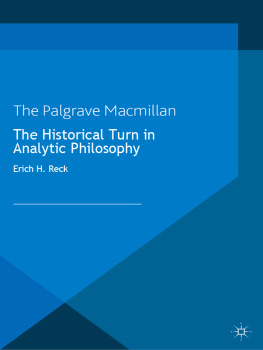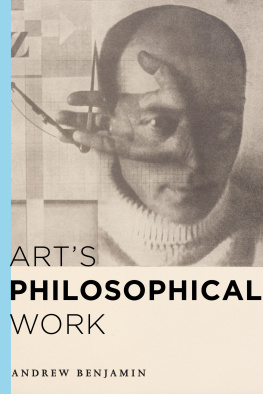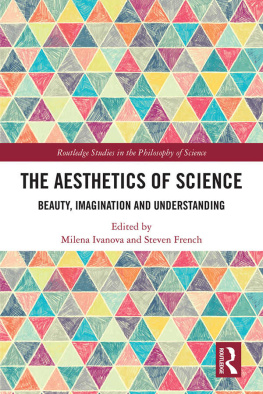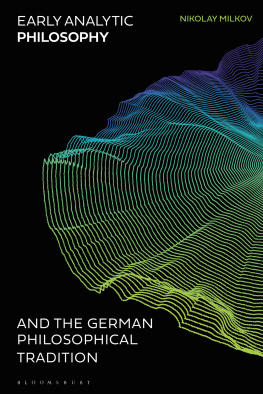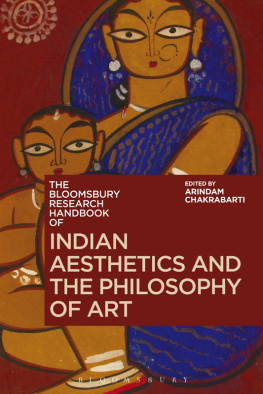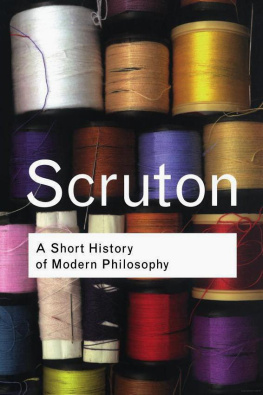REFLECTIONS ON AESTHETIC JUDGMENT AND OTHER ESSAYS
Reflections on Aesthetic Judgment and other Essays
BENJAMIN TILGHMAN
Kansas State University, USA
ASHGATE
Benjamin Tilghman 2006
All rights reserved. No part of this publication may be reproduced, stored in a retrieval system or transmitted in any form or by any means, electronic, mechanical, photocopying, recording or otherwise without the prior permission of the publisher.
Benjamin Tilghman has asserted his moral right under the Copyright, Designs and Patents Act, 1988, to be identified as the author of this work.
Published by
Ashgate Publishing Limited
Gower House
Croft Road
Aldershot
Hampshire GU11 3HR
England
Ashgate Publishing Company
Suite 420
101 Cherry Street
Burlington, VT 05401-4405
USA
Ashgate website: http://www.ashgate.com
British Library Cataloguing in Publication Data
Tilghman, Benjamin R.
Reflections on aesthetic judgment and other essays
1.Aesthetics 2.Criticism
I.Title
111.85
Library of Congress Cataloging-in-Publication Data
Tilghman, Benjamin R.
Reflections on aesthetic judgment and other essays / Benjamin Tilghman.
p. cm.
Includes index.
ISBN-13: 978-0-7546-5707-1 (hardcover : alk. paper)
1. Aesthetics. 2. ArtPhilosophy. I. Title.
BH39.T55 2007
111.85dc22
2006026856
ISBN: 978-07546-5707-1
ISBN: 0-7546-5707-8
ISBN: 978-14094-8511-7 (ebk-ePUB)
Printed and bound in Great Britain by Antony Rowe Ltd, Chippenham, Wiltshire.
Contents
Foreword
The papers in this collection were written and published over a period of more than thirty years. They are the result of a long-standing interest in aesthetics and a growing interest in art. It is, needless to say, reflection on art from which philosophers derive their problems and construct their theories and it is against art and our traffic with it that the philosophy has to be measured. For want of any other obvious systematic or thematic unity the articles are arranged chronologically in the order of their publication. They treat almost entirely of issues in literature and the visual arts, especially painting. Music is scarcely mentioned. My philosophical thinking has been shaped largely by the conception of philosophy to be found in Ludwig Wittgensteins Philosophical Investigations and I have sought in these papers, as elsewhere, to apply its philosophical techniques to problems in aesthetics and the philosophy of art.
Despite a lack of systematic unity, there are, nevertheless, several recurring themes to be found in these essays. In the first place, they are consistently antitheoretical. I have long been opposed to general theories and definitions of art and what it is, the kind of theorizing that so often gets started as an attempt to respond to the question, What is art? Likewise, I am opposed to theories of arts subspecies that seek to tell us what painting is or what poetry is, to mention only two. Ontological theories that seek to tell us what kind of object a work of art is are frequent targets and come in for their share of criticism. I have throughout kept in mind Wittgensteins remark that ontology is best understood as grammar, that is, as observations about how certain words function in language. Also under attack are theories about aesthetic and artistic judgments. I am of the opinion that philosophical theories, of whatever stripe, will not solve the problems about art and our appreciation of art that they are intended to solve. The task is to see through and behind those theories in order to get a clear view of what those problems are and where their solutions may lie.
In the second place, I have sought to emphasize both the importance of the representation of the human in art and our human response to art. The philosophy of art cannot get on simply by analyzing the language in which aesthetic descriptions and judgments are expressed; that language has to be seen in the context of the life that produces it. It is reflection upon this life, which is our life, that can reveal the importance of art and the difference it can make in our lives. Philosophical aesthetics cannot be simply play with definitions and logical puzzles for that tends to obscure the importance of doing that kind of philosophy, which, after all, should aim at giving us a clear picture of our concerns about art that leads us to think seriously about it.
I want to express my thanks to Peter McCormick and Kjell S. Johannessen who have urged me to undertake such a collection and to Marilyn Tilghman for much loving encouragement and invaluable editorial assistance.
Benjamin R. Tilghman
Lawrence, KS
Acknowledgments
The Literary Work of Art was published in Benjamin R. Tilghman, ed., Language and Aesthetics, (The University Press of Kansas, Lawrence/Manhattan/Wichita, 1973) and is reprinted by permission of the University Press of Kansas. Aesthetic Descriptions and Secondary Senses appeared in Philosophical Investigations, vol. 3, no. 3 (Summer 1980). Danto and the Ontology of Literature, was published in The Journal of Aesthetics and Art Criticism (Spring 1982). bvhpt Verlagsgesellschaft mbH & Co. KG has given permission to reprint Understanding People and Understanding Art, Proceedings of the 8 th International Wittgenstein Symposium (Vienna: Verlag Hlder-Pichler-Tempsky, 1983), and Perspective, Painting and the Look of the World, Proceedings of the18th International Wittgenstein Symposium, Vienna: Verlag Hlder-Pichler-Tempsky, 1995). I am indebted to Oxford University Press for permission to reprint Picture Space and Moral Space (The British Journal of Aesthetics, vol. 28, 1988, pp. 317-326); Literature, Philosophy and Nonsense (The British Journal of Aesthetics, vol. 30, 1990, pp. 256-265); Charles Le Brun: Theory, Philosophy and Irony (The British Journal of Aesthetics, vol. 32, 1992, pp. 123-133); and Reflections on Aesthetic Judgment (British Journal of Aesthetics, vol. 44, 2004, pp. 248-260). Architecture, Expression and the Understanding of a Culture, is from Michael Mitias, ed., Philosophy and Architecture (Amsterdam: Rodopi, 1994) and reprinted by permission of Rodopi. A Conceptual Dimension of Art History appeared in Richard Woodfield, ed., Gombrich on Art and Psychology (Manchester and New York: Manchester University Press, 1996). Language and Painting, Border Wars and Pipe Dreams is reprinted from Richard Allen and Malcolm Turvey, eds, Wittgenstein, Theory and the Arts (London and New York: Routledge, 2001) by permission of Thompson Publishing Services. Literature, Human Understanding and Morality is reprinted from Peter B. Lewis, ed., Wittgenstein, Aesthetics and Philosophy (Aldershot: Ashgate Publishers Ltd., 2004) by permission of Ashgate Publishers. Reflections on Aesthetic Theory is reprinted by permission from Dickie, Sclafani & Roblin, eds, Aesthetics: a Critical Anthology, pp. 160-170 (Copyright 2/89 Bedford/St. Martins).
Chapter 1
The Literary Work of Art
Literary critics, in their theoretical moments, are sometimes inclined to suppose that certain philosophical preliminaries must be accomplished before their proper business of doing criticism can be gotten on with. I would claim that this is an altogether mistaken supposition; but one that wants showing in detail, and in this paper I must restrict myself to talking about only one such philosophical issue about literature and the practice of its criticism. The question I wish to investigate is the one that Wellek and Warren introduce under the heading The Mode of Existence of a Literary Work of Art. Briefly, the question can be phrased: What kind of an object is a work of literatureor poem, to use the going abbreviationand where is it to be found? The question, however, cannot be discussed briefly, for it involves a number of philosophical tangles. A good deal of untangling is required before we can become clear about why there is thought to be a question at all and what finding an answer is supposed to do for criticism, and become clear about the conception of the nature of criticism that is intertwined with the raising of the question.
Next page

